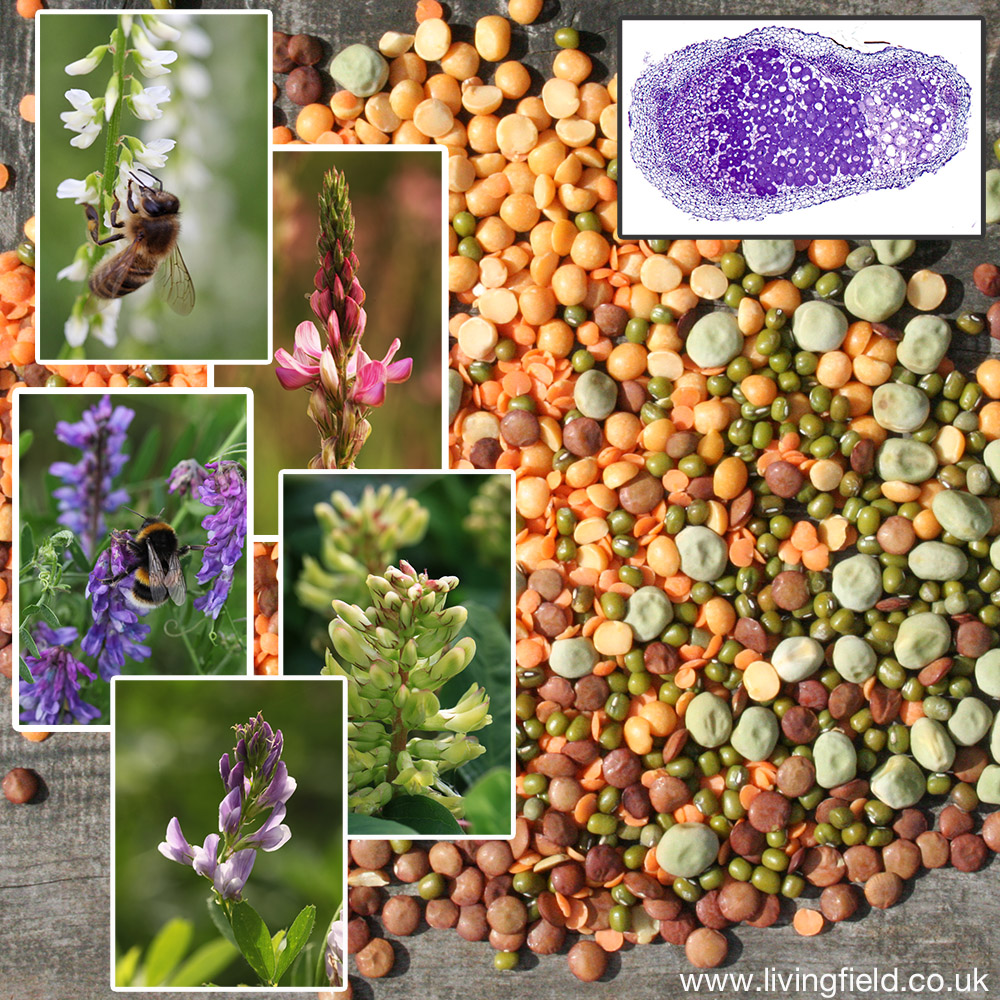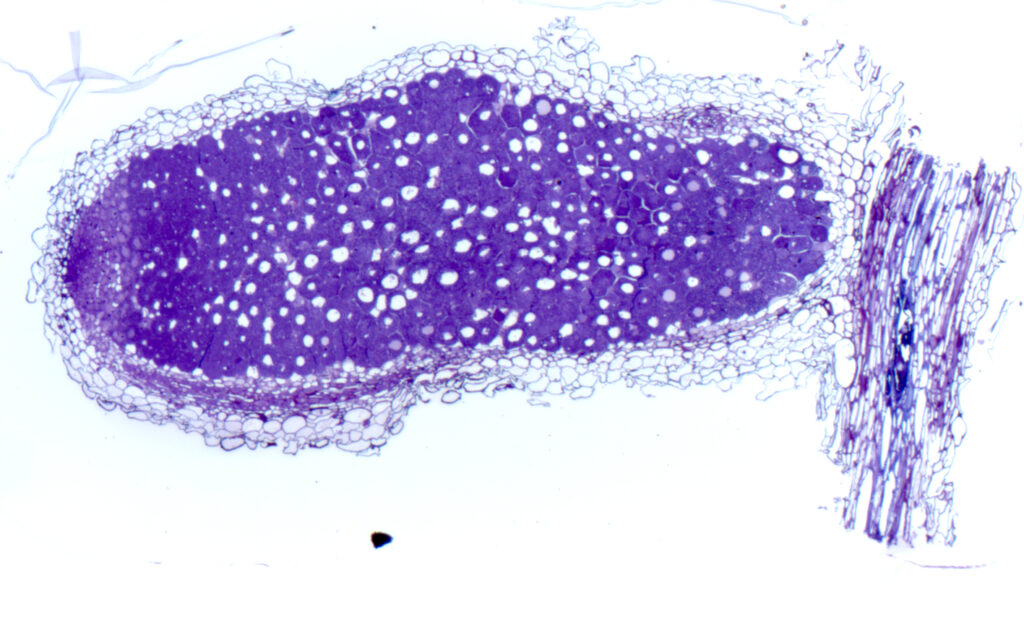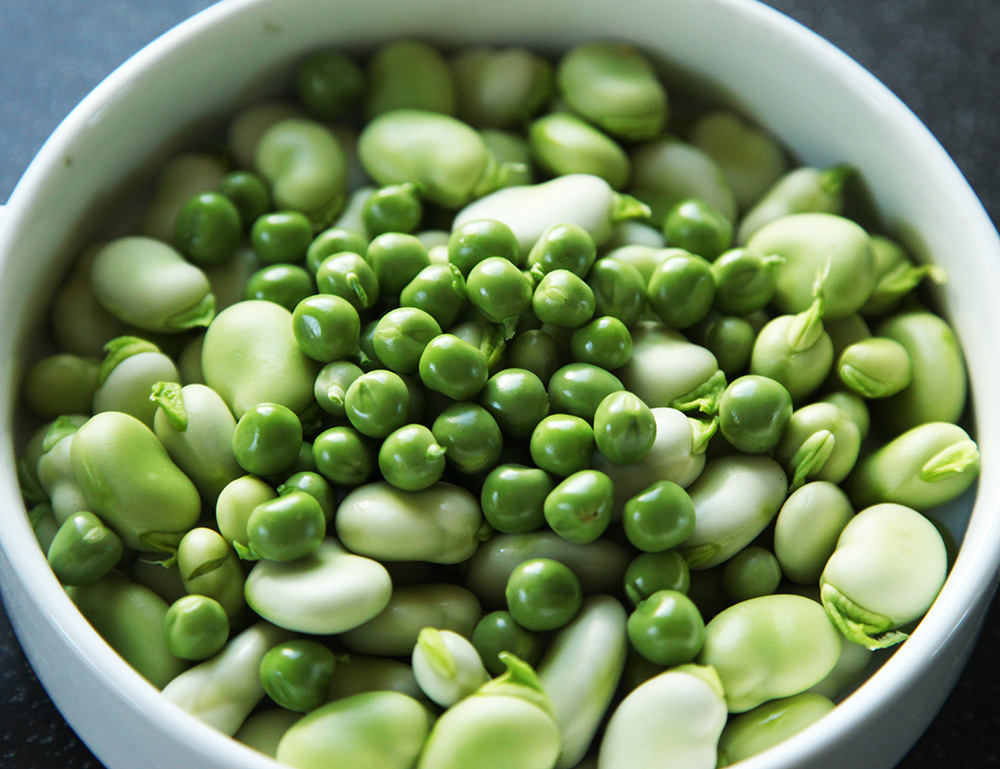The pages on Legumes in 5000 Years – Plants are being revised and expanded. We begin with two short articles on the role of legumes, particularly their ability to capture nitrogen gas from the air and convert it to plant protein through a symbiosis with bacteria.
Natural and renewable sources of nitrogen for crops and grass (introduction below)
Biological Nitrogen fixation by legumes (available soon)

Natural & renewable sources of nitrogen for crops and grass
Current intense crop production uses large quantities of man-made nitrogen (N) fertiliser at great economic and environmental cost. One way to reduce the reliance on man-made N is to increase the production of legumes. These are crops, such as bean and clover, that support ‘biological N fixation’ (BNF), a natural process carried out by specific types of bacteria, collectively known as ‘rhizobia’ that form a symbiosis with legume plants.
The bacteria, living inside swellings on legume roots (root-nodules), convert atmospheric nitrogen gas into plant material. The harvest, being high in protein, has many uses in animal feed and human nutrition, while the residues in the soil provide a nitrogen-rich fertiliser for subsequent crops.
Selection of legume seeds used in cooking – red and brown lentils, marrowfat peas, mung beans – with some forage legumes to the left, top to bottom white melilot, sainfoin, tufted vetch, milk vetch, and lucern, all grown in the Living Field garden. Micrograph top right is a cross section of a legume nodule about 2 mm in length.
Decline and neglect …. but regeneration is possible
Despite their benefits, legume crops have been declining in Europe for several decades as a result of uncertain yields, low economic returns, restricted markets and the ready availability of both nitrogen fertiliser and legume-based animal-feed and human-food from other sources.
The position of legume crops in Europe contrasts with that in certain countries such as Brazil and Australia where production and markets have both increased in recent times. Legumes have been grown in Scotland for thousands of years but hit rock bottom in the middle of the 20th century.
The drive to regenerate legume production in the UK is now full on. Legumes such as beans and peas benefit heath and nutrition. As crops and forages, legumes reduce the amount of mineral nitrogen fertiliser needed to grow plants – and so reduce the greenhouse gas emissions and water pollution from agriculture. And they have much wider ecological benefits by regenerating soils and providing resources for useful invertebrates and microorganisms.
There will continue to be great environmental and economic costs of NOT putting legumes at the centre of crop and grass systems.
Read on …. for more on Research on legumes in Scotland and how Policy can encourage their return. Adapted from an original 2010 article by Pietro Iannetta, Geoff Squire, both of the James Hutton Institute, and Janet Sprent, University of Dundee.

Cross-section of a legume root nodule (1-2 mm long) and its supporting root, a micrograph by Euan James. The part of the nodule containing the bacteria and fixing nitrogen is coloured blue. It is surrounded by a protective cortex just a few cells wide. The nodule is from a plant of Trifolium campestre, one of the clovers.
Living field articles on legumes
The Living Field has grown legumes for many years, harvested them, used them in cooking and explored their many contributions to health, nutrition and environment.
As for other crops in the 5000-Plants series, the 5000-Plants-Legumes page is set to continue with:
- Legumes of the world – the main species and where they are grown
- Legumes in the croplands – from pre-history to the present
- Sources | links | references | contacts
For now, we will explore some of the legume-related articles already on the Living Field web.

Bowl of the commonest grain legumes grown in Britain – peas and faba beans (also called broad beans) – ready to cook (www.livingfield.co.uk)
Beans on toast
An exploration of the foods that make up this well known meal – the ‘bean’ part being a legume – and including the 9 other crops and their origins in several continents, the massive amount of water used to grow and process them, culminating in the Famous Beans on Toast Roadshow.
Beans on toast – introduction to the crops that go into this meal, and then ….
- Beans on toast – a liquid lunch
- Seed to sewer – the water footprint of a simple meal
- Where does our food come from? – the Beans on toast roadshow and exhibition
[List of further Living Field articles under construction – 4 Feb 2024]
Contact for the 5000-Years / Legume pages: geoff.squire@hutton.ac.uk or geoff.squire@outlook.com
